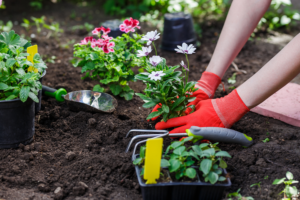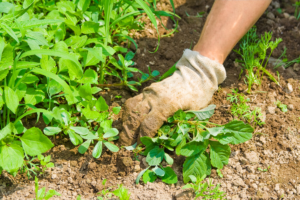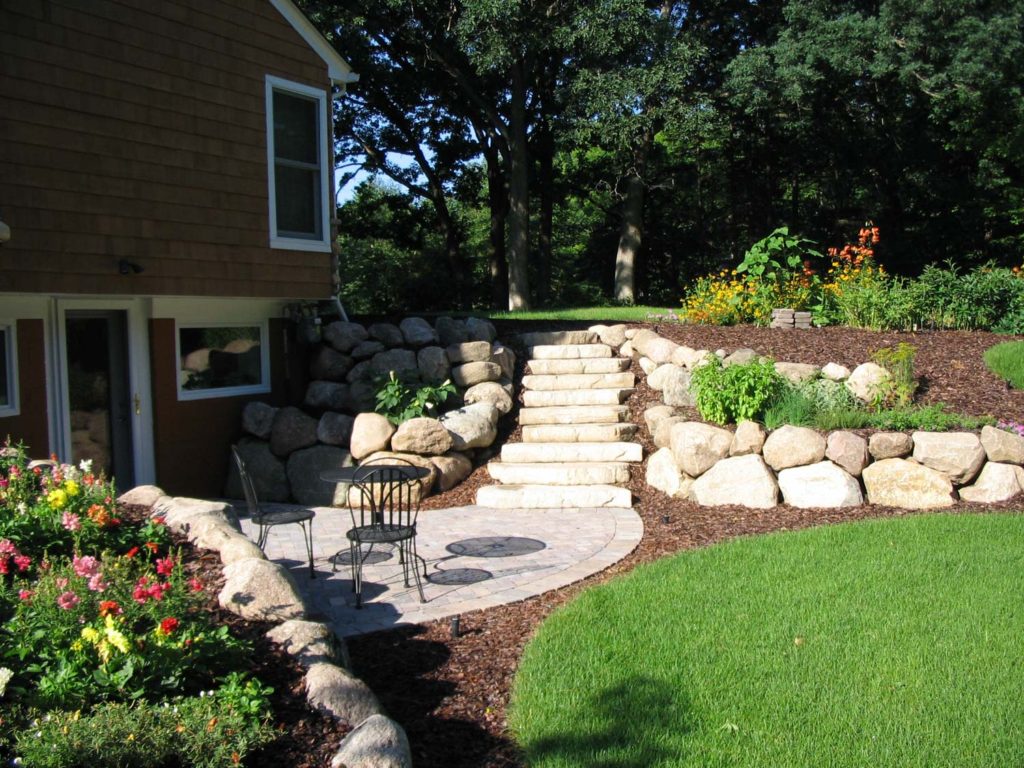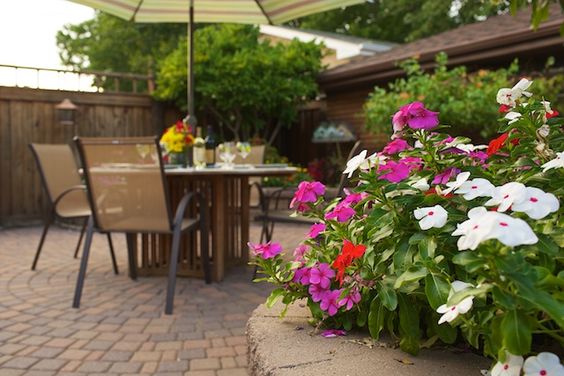The summer growing season is upon us, and that means it’s time to tend to your planting beds so they can produce the strong, lush, and beautiful plants you desire. As you dig into your gardens this spring, consider implementing the following 7 tips for pristine planting beds.
1. Improve Your Soil’s Health

Healthy soil is the key to healthy plants. You could be doing everything else right, but if your soil is depleted of nutrients, your plants won’t grow as strong and healthy as they should. Poor soil quality is one of the main reasons plants fail. To improve your soil quality, add several inches of compost and peat moss, mixing it into the top 6-8 inches of soil. As you do this, remove any rocks or roots and break up clumps of soil.
2. Use Fertilizer
Plants naturally deplete the soil over time, and fertilizer adds nutrients back in. Before you mulch, apply a slow-release fertilizer. Organic fertilizers can also help improve your soil’s structure, allowing it to retain water and nutrients better. Be sure to carefully read the instructions on your fertilizer before using, as over-fertilization can damage your plants.
3. Pick the Right Plants

Choose plants that are suited to the conditions of your yard. If you have a lot of shade, pick plants that don’t need as much sun or warmth; if your yard is full of sun, make sure to choose plants that can handle the heat. Use native plants whenever possible, as they are better suited to the climate you live in. Choosing the right plants will not only result in more beautiful gardens, it will mean less maintenance for you as well.
4. Apply Fresh Mulch
Mulch makes your planting beds look great and offers plant health benefits as well. It works as a weed suppressant and helps soil maintain a consistent temperature and moisture level. Apply a thin, fresh layer annually for best results.
5. Add Ground Cover Plants
As beneficial as mulch is, if you’re going for a more natural look for your beds, ground cover plants might be just the ticket. Add plants like periwinkle, creeping phlox, sedum, or lamium in a few spots and let them fill in between your other plants. You’ll still want to use some mulch, but will need less.
6. Control Weeds and Pests

Mulch will certainly help keep weeds down, but when you do need to pull weeds, make sure you get the whole plant – roots and all. Weed regularly for best results. You might also consider using a pre-emergent herbicide to catch weeds before they emerge from the ground.
The best way to keep pests under control is to keep your plants healthy, as healthy plants are generally less susceptible to damage. In addition, some plant varieties are more naturally pest resistant than others, and can help reduce the need for insecticides or fungicides. If you find you need help with pests, take a look at our blog post on the topic or contact us to handle your pest control.
7. Water Consistently
Consider installing a drip irrigation system or a soaker hose. Both will slowly deliver water straight to the plant base where it can be quickly absorbed. These systems will also be much more efficient than hand-watering with a hose: they will help you conserve water while ensuring your plants get the right amount of moisture to grow.
Bonus Tip – Bring in the Pros

If maintaining your planting beds is more work than you want to handle yourself, we can help. McDonough offers seasonal landscape maintenance including planting bed maintenance (top dressing, mulch, plantings, etc), pest control, and more. Contact us here or give us a call for a quote – (651) 755-7901.

